Michael Jordan and the Greats of Swimming: Unique Connections From ‘The Last Dance’
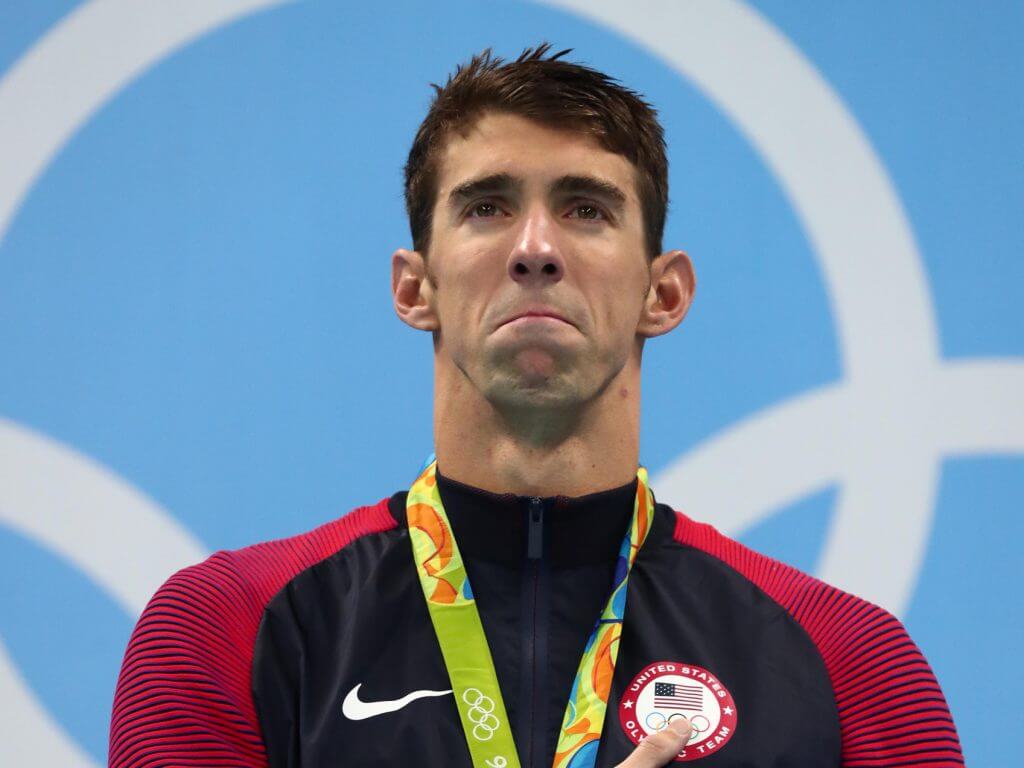
Michael Jordan and the Greats of Swimming: Unique Connections From ‘The Last Dance’
By Kate Walter, Swimming World Intern.
How do we define the “greats” of each sport? Is there a scale we use to measure their prowess? A certain quota of championships won or records broken that earns them such titles? And how are these legends born? Is it strictly genetics, being destined for glory from a young age, or does hard work and developing a mental edge play a role as well? For sports fans everywhere, The Last Dance provided some long awaited answers. The 10-part documentary presented by ESPN followed Michael Jordan’s historic run during his last season with The Chicago Bulls in 1997-1998, allowing viewers and inside look into one of the most revolutionary teams and iconic players the sport of basketball has ever witnessed. A long awaited explanation for Michael Jordan’s unparalleled greatness can be translated to the mindsets of the respective greats of swimming.
When people think of the greats of swimming, names such as Michael Phelps, Mark Spitz, Dawn Fraser, Krisztina Egerszegi, Tracy Caulkins and Katie Ledecky come to mind, among others. Of course, there is no set list of the “greats,” of the people who have permanently etched themselves into history books and the hearts of fans all around the world. However, there seems to be some underlying characteristics that distinguish these athletes.
“I’ve failed over and over and over again in my life. And that is why I succeed.”
In a Washington Post Article, Ledecky’s former Nation’s Capital coach, Bruce Gemmel, detailed her approach to failure: “There are days she fails catastrophically,” he said. “She fails in practice more than anybody in her (training) group, because she’ll start out like, ‘This is the pace I need to swim in the race, so I need to replicate it in practice.’ And she’ll go six repeats like that, and the tank goes empty and she just falls off. But you know what? She’ll come back the next day and try it again. And on the third day, she’ll nail it. And she’s been doing this since the first day I walked on the deck with her.”
A quote by Michael Jordan echoes a similar relentless attitude: “I’ve missed more than 9,000 shots in my career. I’ve lost almost 300 games. Twenty-six times, I’ve been trusted to take the game winning shot and missed. I’ve failed over and over and over again in my life. And that is why I succeed.”
Both of these athletes emphasize just how important it is to be willing to accept failure and learn from it. Competitors should instead constantly push themselves to the limit of what is possible, working to a point where failure may become inevitable.
Jordan failed to make the varsity basketball team his sophomore year of high school. That summer the ball never left his hand, he worked day in and day out to guarantee his spot on varsity. And the rest was history.
Ledecky failed to defend her world championship title in the 400-meter freestyle at the 2019 World Championships, losing one of her signature events for the first time in her international career. However, despite battling an illness, she managed to preserve and win the 800-meter freestyle soon after, inching away at the finish to secure the victory.
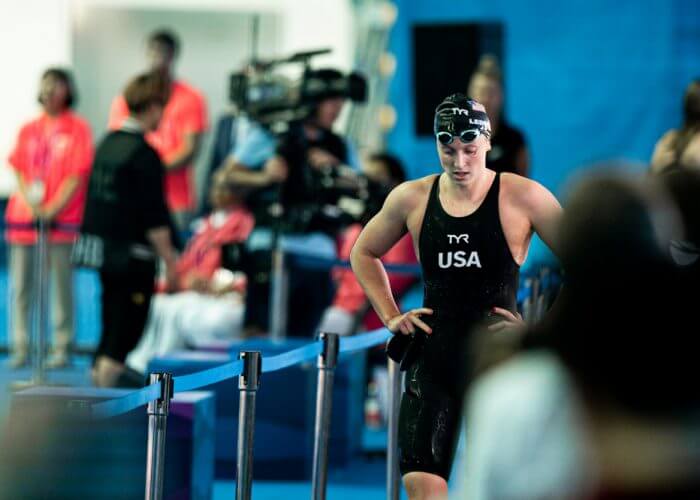
Photo Courtesy: Becca Wyant
Besides their collective attitude toward failure, Ledecky and Jordan share some unusual common history as well. Ledecky’s mother, Mary Gen, attended high school in Williston, North Dakota, the school where legendary Bulls Coach, Phil Jackson, graduated from as well. Jackson’s unique coaching philosophy and commitment to his players’ spiritual and physical development led him to become one of the most respected coaches of all time.
Prior to episodes three and four of The Last Dance, Ledecky shared an old memory with Jordan on Twitter.
Grabbing my popcorn for tonight's episodes of #TheLastDance. I can tell you one thing about Michael Jordan: he's a tough peek-a-boo player but he didn't stand a chance against my popcorn. pic.twitter.com/fvAWlzNhuQ
— Katie Ledecky (@katieledecky) April 26, 2020
Photo Courtesy: Twitter, @katieledecky
Ledecky’s uncle, Jon Ledecky, was a minority owner of the Washington Wizards in the early 2000s, around the same time that Jordan was a player. Little did Jordan know that his peek-a-boo victim would become one of the most decorated Olympians of all-time.
“I was an a**h**e when I was training”
“For me, MJ was everything growing up,” Phelps said in a recent interview with Yahoo Sports. “That was the guy I wanted to be. I wanted to do in swimming what he did in the sport of basketball. In my opinion, he completely changed and grew the sport of basketball to an unbelievable place and heights. That’s really what I kind of replicated my career off of.”
Phelps watched The Last Dance as one of the few who can relate to Jordan’s unparalleled success and uber- competitive mindset. Although, sometimes such success can come at the price of being seen as the “nice guy.”
““I guess to put it quite blunt, everyone’s saying he was an a**h**e, but I would say the same thing about myself,” Phelps noted. “I was an a**h**e when I was training because I wanted to help everybody make sure they had the same exact chance that I had. We’re all in there working together as a team. Even though it’s an individual sport, we want the best for each other. I’m going to challenge them. And I’m going to make sure that they’re getting stresses in practice that they’re going to face in a meet.”
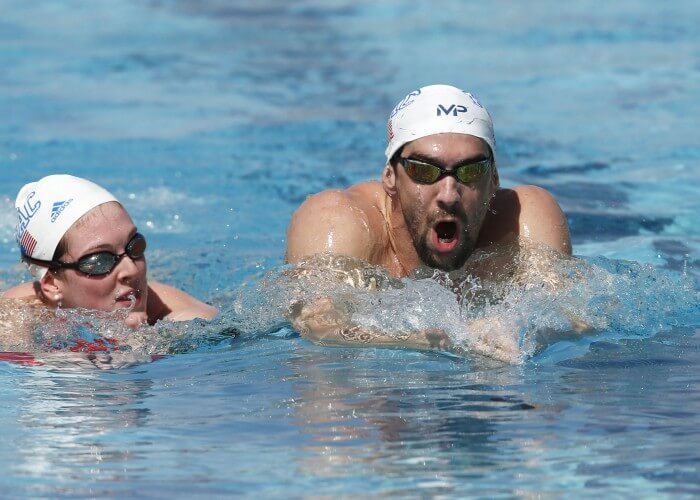
Photo Courtesy: Arizona Republic-USA TODAY Sports
Jordan and Phelps did whatever it took to win. And more than that, they were committed to pushing their teammates to reach a similar level of commitment.
In The Last Dance, former Bulls center Will Perdue described Jordan’s approach to leadership: “Let’s not get it wrong. He was an as*h**e. (And) he was a jerk. He crossed the line numerous times. But as time goes on, you think back about what he was actually trying to accomplish. You think, ‘Hey, he was a hell of a teammate.'”
“Fire Me Up”
There are several ways an athlete can deal with trash talking. They can offer similar comments in return, they can let it get to them, they can ignore it, or, they can use it to fuel their efforts.
In a CNBC interview, Phelps said he “(welcomes) the trash talking. I love when people do it. I love when they do certain things to just fire me up.”
The “Phelps Face” meme that went viral during the 2016 Rio Olympics captures Phelps no-nonsense demeanor in response to rival Chad Le Clos of South Africa shadowboxing in the ready room prior to the 200 butterfly semifinal. The Phelps-Le Clos rivalry had been going on for ages, with Le Clos the guy who beat Phelps in the 200 butterfly at the 2012 Olympics in London. Phelps used this defeat and Le Clos’ shadowboxing antics to fuel his gold-medal victory in Rio, while Le Clos didn’t even make the podium.
This approach is all too familiar to that of Jordan’s. However, Phelps mostly refrained from trash talking himself, while Jordan reveled in stirring the pot. There are numerous instances in The Last Dance where Jordan described how his opponents’ comments fueled some of his most dominant performances.
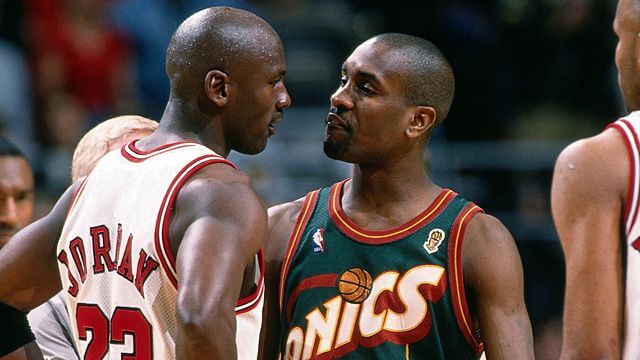
Gary Payton and Michael Jordan, two of the most prolific trash talkers in the NBA. Photo Courtesy: welcometoloudcity.com
In an exhibition game during his rookie season, Hall-of-Famer Reggie Miller of the Indiana Pacers was playing against Jordan in an exhibition game and made the mistake of proclaiming there was “a new kid on the block” at halftime after his stellar starting performance. In the second half of the game, Jordan put Miller in his place. “He outscored me 40-2,” said Miller on Jimmy Kimmel Live. “And as he’s walking off, he’s like, ‘Be sure, and be careful, you never talk to Black Jesus like that.’”
Perhaps one of the greatest stories of trash talk in the world of swimming came during the 2016 Olympics, where 19-year-old breaststroke phenom Lilly King delivered her famous finger-wagging performance. Russia’s Yuliya Efimova proudly waved an index finger, indicating a “number one,” at the camera after winning her semifinal heat of the 100 breaststroke. King, watching Efimova’s action on a TV in the waiting room, mockingly waved her index finger back, then proceeded to dethrone Efimova, earning the top seed going into the final. With a heated rivalry ensuing, King proved her dominance by winning the final, out-touching Efimova by half a second. “We can compete clean and do well at the Games, and that’s how it should be,” said King in a post-race interview, as she noted Efimova’s past doping violations.
Jordan, Phelps, and King teach a very important lesson to all their competitors: don’t poke the bear.
“I’m Back”
The fiercest competitors are never satisfied. They bounce in and out of retirement, constantly seeking new endeavors and reaching new limits. They say they’re done, stepping into the shadows for a brief moment, only to emerge with a roaring fire in their stomach.
Dara Torres in 2000 and 2008 was a comeback story for the ages. Pablo Morales at the 1992 Barcelona Games. Anthony Ervin’s history-making performance in 2016 at Rio. Each of these swimmers announced their respective retirements, only to stage new, epic comebacks and further their success.
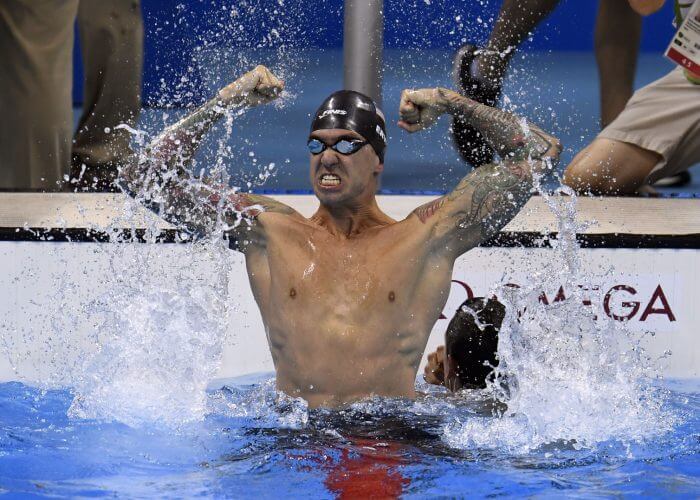
Photo Courtesy: Robert Hanashiro-USA TODAY Sports
In a similar manner, Jordan was notorious for dabbling in retirement, and then returning to continue his legacy on the court. He hung up his Air Jordans and left the Bulls in 1993 to pursue a career in professional baseball, playing for the Class AA Birmingham Barons of the Southern League. Returning to the NBA in 1995 with his legendary press release reading “I’m Back,” he led the Bulls to another NBA Championship three-peat from 1996-1998. He then aimed to make another comeback in 2001 with the Washington Wizards, playing from 2001-2003.
Photo Courtesy: Instagram, @chicagobulls
The restlessness of these athletes can’t be denied. The next time the world watches another “great” announce their departure from the spotlight, know there’s a good chance they will soon rise again.



